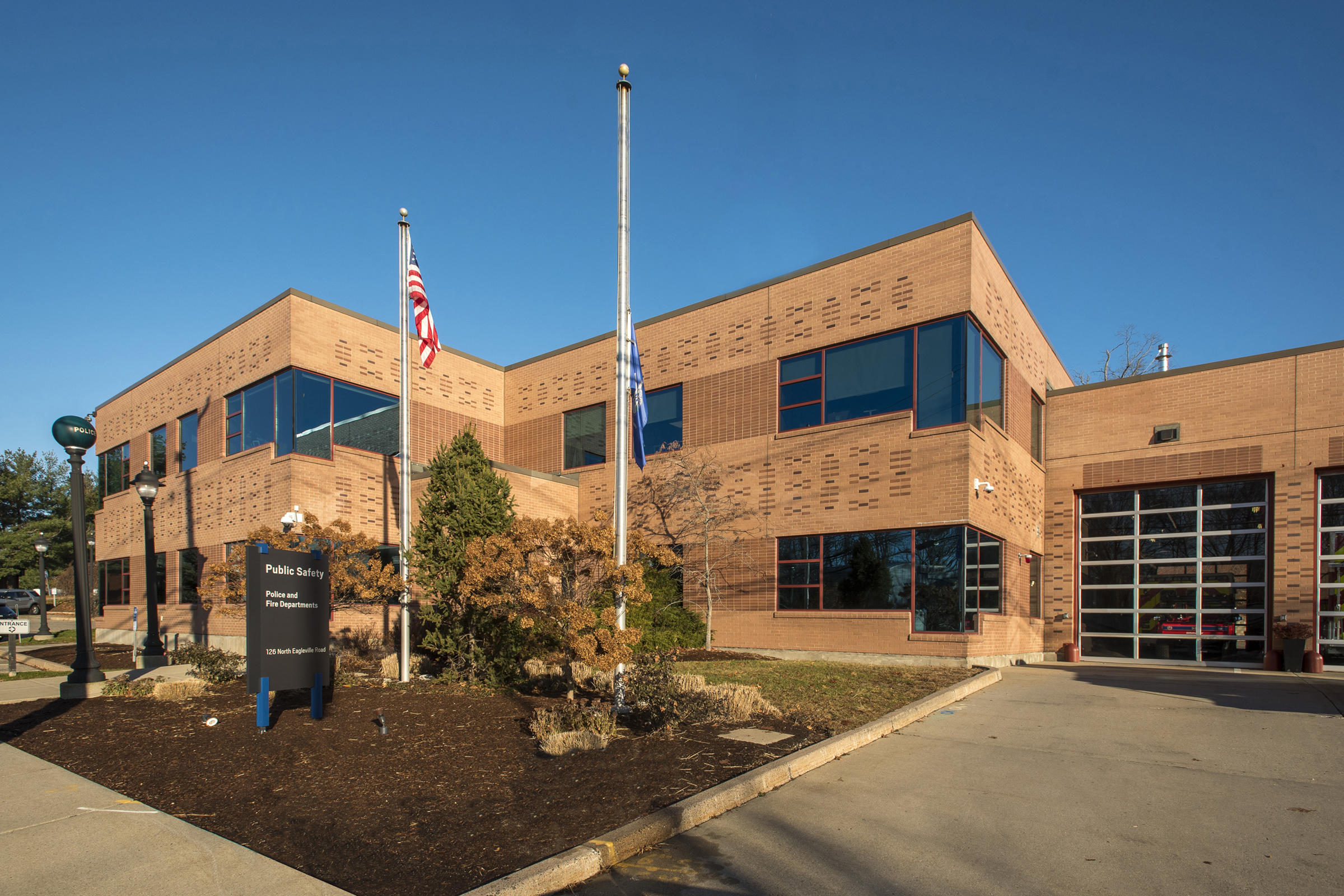The University of Connecticut is releasing two reports this week that detail its response to reports of criminal activity, sexual violence, and other issues it monitors to ensure the safety of its campus communities.
The first, the Clery Annual Security and Fire Safety Report, is required annually from all U.S. universities that receive federal financial aid funds. It includes data about certain crimes identified by the Clery Act, including violations of the Violence Against Women Act; arrests and disciplinary referrals for drug and alcohol violations; and hate crimes reported in the previous calendar year on property the university owns or controls and on public property within or immediately adjacent to campus.
Additionally, the report includes a comprehensive overview of safety policies and prevention programs available to the campus community. It is compiled by the UConn Division of Public Safety.
The second report, compiled by UConn’s Office of Institutional Equity (OIE), is a state-mandated annual overview that requires all Connecticut colleges and universities to outline their policies and data on sexual assault, stalking, and intimate partner violence. It captures a wider range of data in these three categories than the Clery report, because the data collected is not limited to incidents reported to have occurred on UConn property, and it includes incidents reported even in the absence of a UConn connection.
Some categories listed in the Clery and OIE reports appear to capture data about the same kinds of crimes and incidents, including some regarding sexual assault and related crimes. However, the numbers will differ between the two reports because of the differences in how the incidents are defined and the locations for which incidents must be captured.
2019 Clery Annual Security and Fire Safety Report
UConn is posting the report for calendar year 2019 on its website and distributing the link electronically as part of its compliance with federal and state law, and in the interest of informing all enrolled students, faculty, and staff on this important subject.
The data includes reports from crime victims directly to UConn Police, along with information that comes to the attention of campus officials beyond law enforcement.
Those officials, known as “campus security authorities,” currently comprise nearly 1,200 people who regularly interact with students in their roles as resident assistants, coaches, faculty advisers, and other on-campus authorities.
The university has significantly increased training for those officials so that they better understand what they are legally required to report and the proper way to report it. In the case of sexual violence crimes, UConn’s Clery numbers reflect a large amount of input from campus security authorities, along with significant outreach services university-wide to encourage reporting of this traditionally underreported crime.
Of the nine sexual assaults reported at Storrs in 2019 – down from 23 one year earlier – police received six reports directly from individuals. The rest were reported by campus security authorities, including Residential Life and Student Affairs, to be included in the Clery report.
UConn takes an expansive view on what is included in the data by counting all sexual assault reports received in a given year, regardless of the level of detail known to the university; regardless of when the assault is reported to have occurred; and even when the report comes from a third party in the absence of a complainant.
This is an important part of UConn’s commitment to creating and maintaining a campus free from all forms of sexual harassment, sexual violence, relationship violence, and stalking.
In 2012, the UConn Board of Trustees adopted a University policy that made nearly all UConn employees “required reporters” of sexual assault. That policy also has increased the number of reports at UConn, which are reflected in the Clery numbers and can make comparisons difficult against other universities whose policies are not as robust.
The Office of Institutional Equity has also increased the information available online to help victims of sexual assault receive support and file reports, including through its website on sexual violence, relationship violence, and stalking awareness.
UConn’s new Clery report also captures data on reports of domestic violence, which is defined differently in Connecticut than in many other states. The 2019 figure, 14 events reported, is down from 21 in 2018.
Before June 30, 2019, Connecticut’s domestic violence laws afforded protection to any people who lived together, including college roommates in non-romantic relationships, but the law was changed starting July 1, 2019, to include two exemptions.
The first exception clarified that platonic roommates are not subject to mandatory arrest when they who are attending higher education and live on campus or in off-campus housing that is owned, managed, or operated by the institution.
The second exception extends to platonic roommates anywhere who are making payments pursuant to a written or oral rental agreement, also excluding them from mandatory arrest. The secondary exception would apply to sororities or fraternities who are owned and operated by individual organizations.
However, roommates who are in a dating relationship, married, formerly married, related by blood or by marriage, or who have a child in common are still subject to the family violence mandatory arrest laws.
In reviewing Clery data, it is also vital to understand that the ways in which domestic violence is defined and application of the applicable laws vary from state to state, making comparisons to other states’ institutions invalid.
For instance, UConn’s domestic violence reporting process captures figures for the number of victims, not the number of incidents. Therefore, if two people involved in one incident both report it separately, the same incident appears twice in the data as two separate offenses if both individuals are the victim of a crime. One overall event can generate two or more statistics.
Some reports also come after bystanders and other people contact police, saying they are concerned about domestic altercations they believed they witnessed, overheard, or otherwise learned about as friends or neighbors of other students.
University officials say that indicates growing awareness perhaps prompted by UConn’s bystander intervention programs, which help increase awareness of sexual violence on campus and empower students to be effective, proactive bystanders.
One such program, Protect Our Pack, is presented to all incoming first-year and transfer students – in addition to resident assistants – at the Storrs and regional campuses during fall orientation and the Week of Welcome, as students settle in for the new academic year.
In addition, UConn Police also offers many initiatives tackling difficult conversations about stalking, intimate partner violence, consent, and effective communications. The programs are offered throughout the year to students at all academic levels.
Clery data also indicates that police made 46 arrests at Storrs last year for drug abuse violations; four arrests for liquor law violations; and received five reports of stalking incidents that met Clery reportable guidelines.
2019 UConn Report Pursuant to State Statute Section 10a-55m
In addition to the annual federally mandated Clery report, UConn also submits to the Connecticut General Assembly a yearly report specifically on sexual violence policies and data.
Figures in this report exceed those in the Clery data because it captures all incidents disclosed to UConn, regardless of on or off-campus location or the year in which they are reported to have occurred.
The report indicates that UConn received 138 reports in 2019 of sexual assault, of which 73 were reported to have occurred during the calendar year. The University’s definition of sexual assault is broad, and can include incidents such as unwanted touching (sexual contact) along with more physically invasive offenses categorized in criminal law.
The sexual assault disclosure numbers also can include reports of incidents from many years ago, including childhood abuse – all of which helps the university provide appropriate, compassionate and trauma-informed services.
Among the 138 reports of sexual assault, 34 of the respondents were identified as being connected to UConn; five of the reports came in anonymously or confidentially; and in 13 of those cases, the reported victim chose to participate in a University investigation.
Twenty incidents of stalking were reported, including 19 that occurred in 2019. In 12 of the stalking cases, the respondent was identified as being connected to UConn; and in two of those cases, the reported victim chose to participate in a university investigation.
A total of 67 cases of intimate partner violence were reported, including 45 reported to have occurred in 2019. In 24 of the intimate partner violence cases, the respondent was identified as being connected to UConn; and in four of those cases, the reported victim chose to participate in a University investigation.
In general, the University takes steps to follow the wishes of the victim whenever possible and not investigate unless that individual wants the University to do so. Only in limited circumstances will the University proceed with an investigation against a victim’s wishes.
Factors considered within this determination include the age of the victim, whether there is evidence of a pattern of misconduct, the severity of the misconduct, and whether there is a safety risk to the victim or the campus community.
In matters where an investigation does not occur, the University may still take responsive or preventative actions, such as meetings with the alleged respondent and/or additional training and prevention work with impacted communities; these responsive steps also may be taken in matters where policy violations have not been found.
In addition to providing data, the OIE report outlines more than 500 annual awareness and prevention campaigns during 2019. They include the “Protect Our Pack” bystander intervention training provided at orientation; UConn’s Violence Against Women Prevention Program (VAWPP) courses; the widespread training provided to employees; and many others.
UConn also continued to utilize the online interpersonal violence prevention program for rising juniors and seniors, Not Anymore, during the 2018-2019 academic year. The online, video-based program includes information about consent, bystander intervention, sexual assault, intimate partner violence, and stalking.
UConn also updated its Policy against Discrimination, Harassment, and Related Interpersonal Violence in August 2020 as a result of the new federal Title IX regulations.
The updates to the Policy added a definition of Prohibited Conduct called “Title IX Sexual Harassment” and a new category of employees in the cultural centers and Ombuds Office who are generally exempt from reporting Prohibited Conduct to OIE called “Exempt Employees.” This exemption gives students and employees who are impacted by sexual misconduct more options to seek help and assistance without triggering an obligation for staff in these designated areas to report to OIE unless requested to do so by the impacted student or employee.



